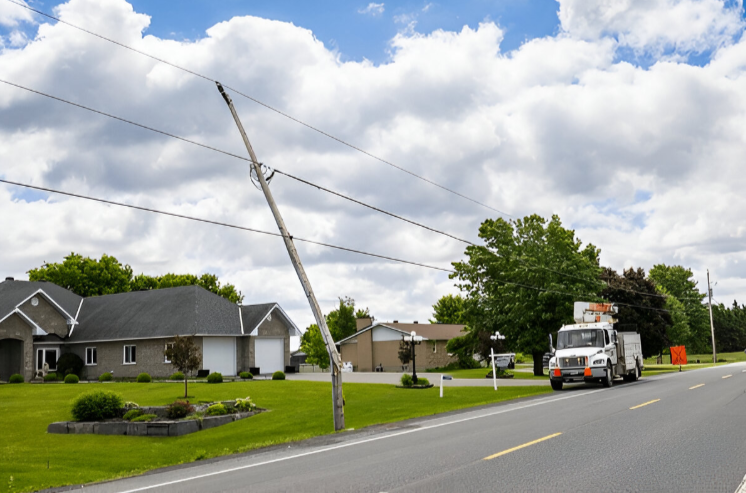When Environment Canada issues a Veille d’Orages Violents (Severe Thunderstorm Watch), it’s not just about watching the sky – it’s about being ready. These watches mean that conditions are favourable for severe storms that could bring damaging winds, hail, lightning, and even tornadoes.
Here are the top 5 emergency preparedness tips to help you stay safe and proactive when a violent thunderstorm watch is in effect:
1. Stay Informed – Don’t Just Rely on the Sky
Information is your first line of defense. A Veille d’Orages Violents means the risk is elevated, so don’t wait until thunder cracks overhead.
What to do:
- Monitor official weather sources like Environment Canada, WeatherCAN app, or your local news.
- Enable emergency alerts on your phone.
- Follow local municipalities or emergency services on social media for real-time updates.
💡 Pro Tip: Turn on push notifications for weather apps to get alerts instantly.
2. Create or Update Your Emergency Kit
A good emergency kit can be a lifesaver if the power goes out or you need to take shelter.
Essentials to include:
- Flashlights and extra batteries
- First aid supplies
- Bottled water (at least 2L per person per day)
- Non-perishable food for 72 hours
- Battery-powered radio
- Power bank for phones
- Important documents in a waterproof folder
📝 Keep your kit easily accessible, not buried in a basement closet!
3. Secure Your Home and Property
High winds and hail can cause serious damage in minutes. Take small steps before the storm hits.
Action items:
- Bring in patio furniture, umbrellas, and loose items from balconies or yards.
- Close and lock all windows and doors.
- Unplug sensitive electronics to prevent surge damage.
- Move vehicles into a garage or away from trees, if possible.
🔐 If you live in an apartment or condo, clear your balcony and alert building staff of any potential risks.
4. Have a Family Emergency Plan
When time is short, confusion leads to danger. Having a plan ensures everyone knows what to do, fast.
Plan ahead by:
- Establishing a safe indoor space (basement or interior room away from windows).
- Creating a contact plan if family members are apart.
- Knowing evacuation routes and nearby shelters.
- Practicing what to do in a power outage or emergency.
👨👩👧👦 Involve children in drills so they feel confident and less anxious.
5. Be Ready to Act – Not Just React
A “watch” can escalate to a “warning” with little notice. Be ready to take shelter or move quickly.
During the watch:
- Cancel or postpone outdoor activities.
- Keep your devices charged and fuel in your car.
- Stay off the roads if possible during severe weather.
- If you’re already outdoors, know the nearest shelter location.
⚠️ Never wait until you “see lightning” – if there’s a watch, the threat is already real.
Final Thought: Preparedness is Peace of Mind
Storms can be unpredictable, but your response doesn’t have to be. With just a little preparation, a Veille d’Orages Violents becomes less of a panic moment and more of a manageable situation.
Taking these five simple steps can make all the difference for your safety and peace of mind.
FAQ
Q: What’s the difference between a “watch” and a “warning”?
A: A watch (veille) means conditions are favourable for severe weather, while a warning (alerte) means it is happening or imminent – immediate action is required.
Q: Can thunderstorms really cause tornadoes?
A: Yes, particularly during a supercell storm. That’s why watches often advise people to be prepared for all types of severe weather.











